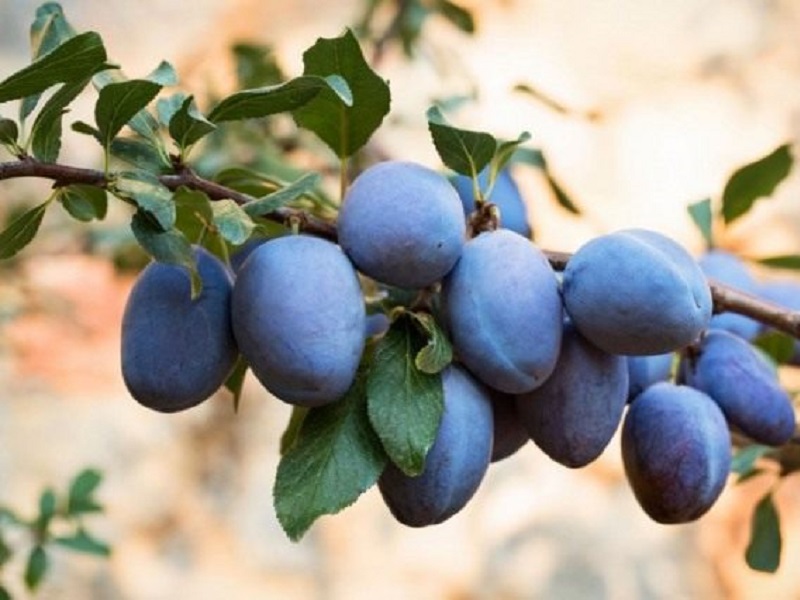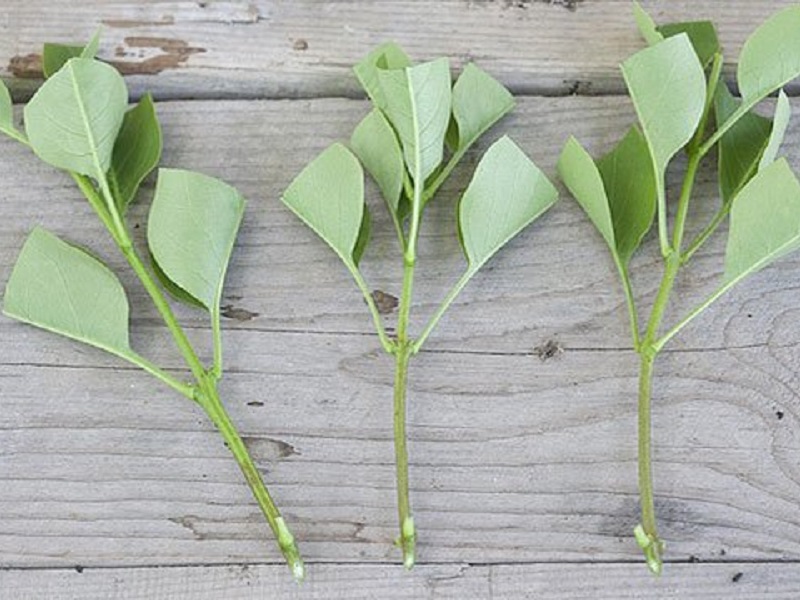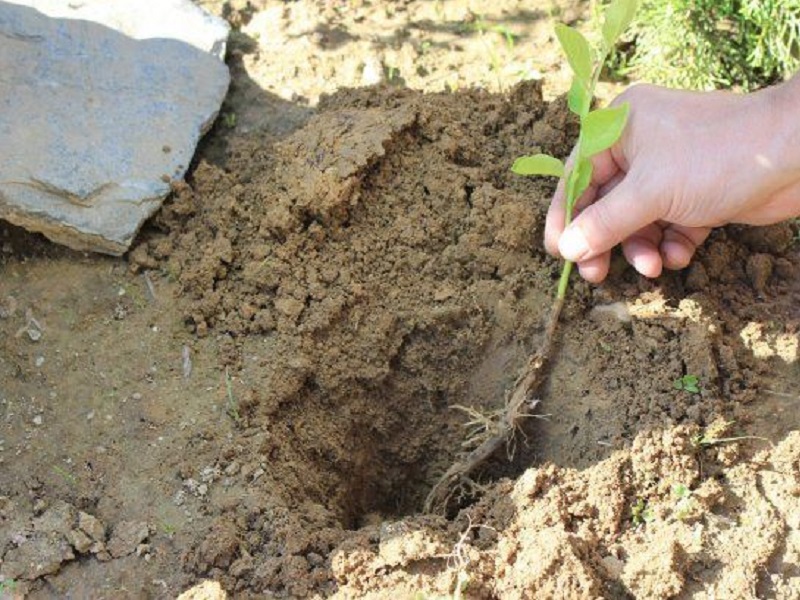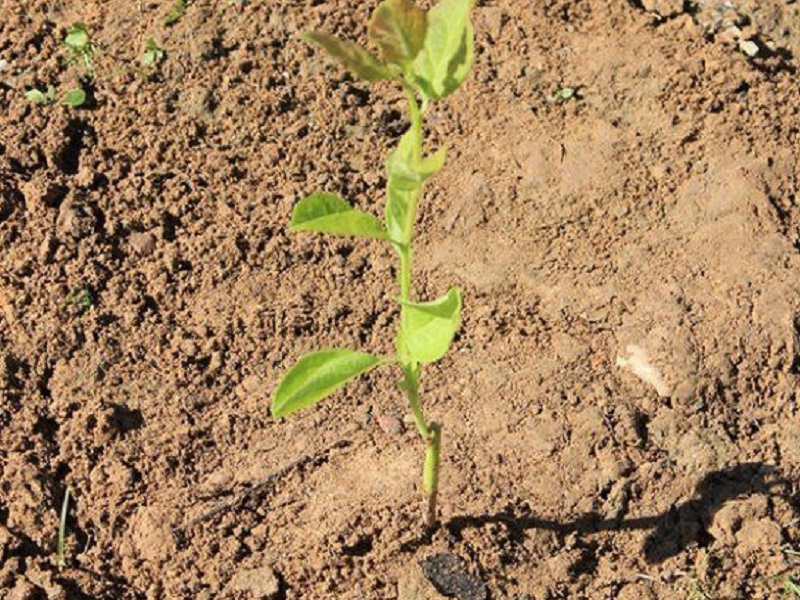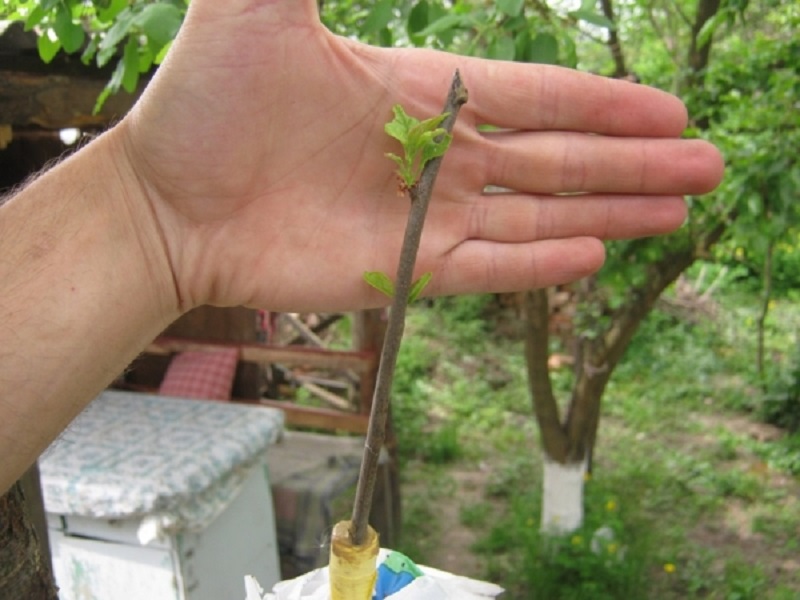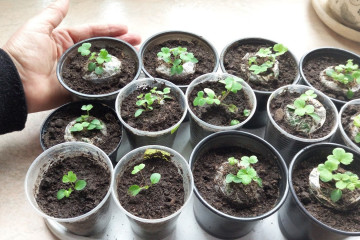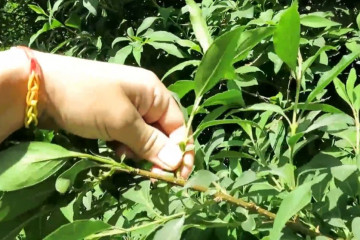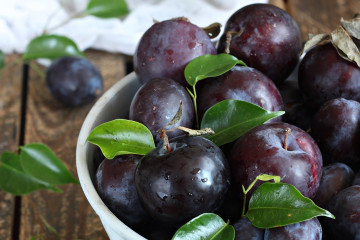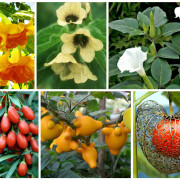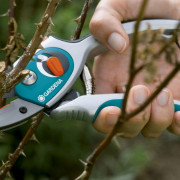Plum propagation by cuttings in summer - advantages and disadvantages
Content:
Fruit trees can be propagated naturally using seeds, root shoots and cuttings, as well as artificially: grafting and cuttings. Any of these methods is manageable even for a beginner. Plum propagation by cuttings in summer is the most popular way to obtain planting material. This is a simple and exciting activity that will save you money on buying new seedlings.
Is it possible to propagate plums by cuttings in summer
Experienced gardeners prefer to carry out plum cuttings in the summer, considering this method to be the most reliable due to stable results, high survival rate of plantings and preservation of varietal qualities. Most often, reproduction is performed by lignified cuttings, the harvesting of which is planned for the fall and involves their storage until spring.
Green cuttings, which are carried out in the summer, were previously used exclusively for industrial purposes, but now amateurs are also interested in this method. It involves the use of summer soft, not yet lignified cuttings.
Advantages and disadvantages of summer cuttings
Among the positive qualities are:
- acceleration of the growing process;
- high survival rate as a result;
- preservation of varietal qualities;
- no need to organize winter storage of future planting material.
There are also disadvantages of summer cuttings:
- the method is not suitable for all varieties, but only for those that form a lot of root growth;
- the need to create conditions for the normal rooting of the material;
- financial expenses in connection with the purchase of additional funds.
When choosing this option for reproduction of plums, observing all the requirements, the seedling will successfully root and give a good harvest in 4 years.
Optimal timing
Green cuttings should be pruned at the time of greatest activity, in the stage of intensive growth and vegetation, which begins in June.
Auspicious days
Harvesting of cuttings is carried out from early June to mid-July in areas with moderate climatic conditions. A visual sign for starting the procedure is the appearance of redness at the base of young growing shoots.
Suitable varieties of plum
Plum cuttings are not suitable for all varieties of fruit crops. It is best to root crops that tend to form a dense root system abundantly. Cultivars suitable for this breeding method:
- Hungarian;
- Purple;
- Red dessert;
- Renklode Tambov;
- Early ripening red;
- Memory of Timiryazev;
- Volga beauty.
The results of the work done will be influenced by the age, condition and variety of trees, the quality and timing of harvesting cuttings, so all stages should be treated responsibly.
Selection and preparation of cuttings
When choosing summer cuttings for further rooting, you should pay attention to the following features:
- diameter over 7 mm,
- length - 10-15 cm;
- optimal age - 1 year;
- the presence of 2-4 green leaves or buds.
Only strong strong growths can take root. If such material is not available, make a rejuvenating pruning of a fruit tree and prepare cuttings for the next year.
The preparation of the cutting takes place in several stages:
- Choose a shoot 40-50 cm long, without signs of disease and yellow leaves and mark the place of pruning.
- Make a bottom cut at a 45 degree angle to increase the absorption of nutrients during rooting.
- The upper cut is straight, to exclude evaporation, do right above the leaf.
- Remove all excess leaves, leaving only one at the top for photosynthesis.
Rooting methods
There are several effective ways to root a cutting at home:
- Place samples in soil, create greenhouse conditions by stretching plastic wrap. Root formation is possible at optimal temperatures and humidity.
- Place the cuttings in small pots with soil, provide a polyethylene shelter, put containers with water between the containers, in order to prevent the earth from drying out quickly.
Many people are interested in how to root a plum branch. To do this, you can create a greenhouse effect in a bag with sphagnum, periodically moistening the moss. In such an environment, aerial roots are formed, after which the cuttings are separated and transplanted into open ground.
Is it possible to grow a plum from a shoot and will it bear fruit
Propagating plums by root shoots is quite effective. Since dormant buds are located on the roots, which, under certain conditions, can form a full-fledged shoot.
Most gardeners are concerned about planting root-grown plums. Sometimes young trees from root shoots give small and tasteless fruits, in order to avoid this, you need to be vaccinated. For abundant fruiting, it is important to choose a promising sprout, among those that are farther from the alignment and at the end of the growing season to separate it from the mother tree, moving it to a place prepared in advance.
Planting ready-made cuttings
Planting process instructions:
- Select and prepare quality cuttings.
- Warm up the greenhouse to 25-30 degrees, water abundantly and fertilize the soil.
- Treat the bottom of the sprout with a root growth stimulator.
- Plant at a slope of 45 degrees to a depth of 3 cm. Maintain a distance of 5 cm between rows.
- Install the arcs and lay the covering material.
Breeding features
All breeding methods are effective in accordance with the type of fruit crop and the region of cultivation.
Depending on the type of plum
If there is a mother tree of suitable age and size with a well-formed root system, propagation by cuttings will be successful. If the tree does not meet the standards, it is better to give preference to the root sprout method or layering.
Depending on the region
Before starting the process, you should find out how plum multiplies depending on the region. Suitable climate for rooting summer cuttings in temperate zones.
Further care
A plant in a greenhouse requires care and attention, which includes carrying out certain agricultural techniques:
- watering and spraying 2-3 times a day;
- daily airing so that condensation does not form and the decay process does not start;
- single mineral dressing;
- preventive spraying with antifungal and antibacterial agents.
For the winter, mulch the soil and cover with geotextiles. Landing in open ground is carried out only next spring.
Breeding secrets and gardening tips
Many gardeners, who have repeatedly gone through all the processes of reproduction of fruit trees, know how to cut plums in the summer, and are confident that a positive result is possible only if the following rules are observed:
- You can root the twigs at home and greenhouse conditions. For greater efficiency, use a root growth stimulant.
- Watering stops in autumn.
- In winter, it is important to harden summer cuttings.
- No need to waste time rooting weak cuttings, it is better to postpone the procedure for next year.
- If it was not possible to propagate plums using cuttings in the summer season, it is worth trying spring rooting of lignified specimens, which will have more time to adapt and prepare for winter.
Experts are confident that in order to obtain high-quality seedlings, it is necessary to create optimal conditions and a healthy mother tree from 3 to 10 years old.
Knowing how to propagate plums correctly at home, you can get a lot of high-quality seedlings and fill your garden with your favorite fruit trees. Compliance with the rules for caring for a young plant will contribute to rapid rooting, rapid development and fruiting.

